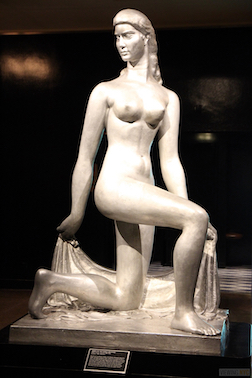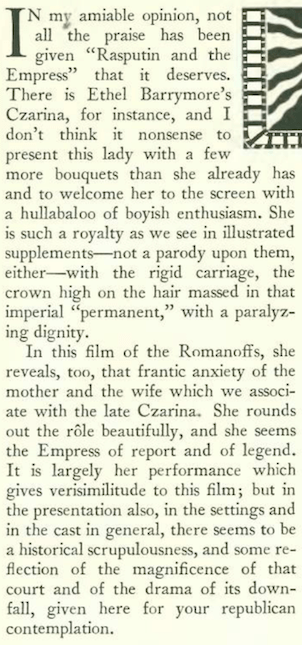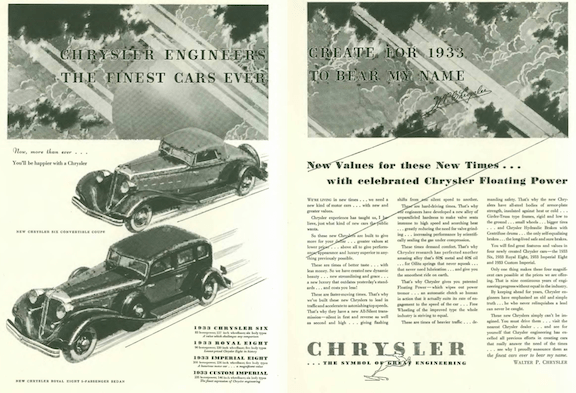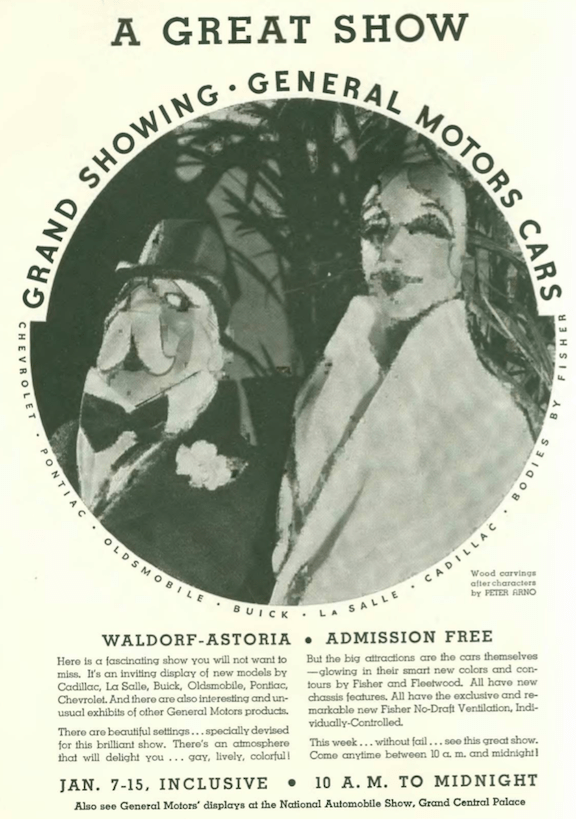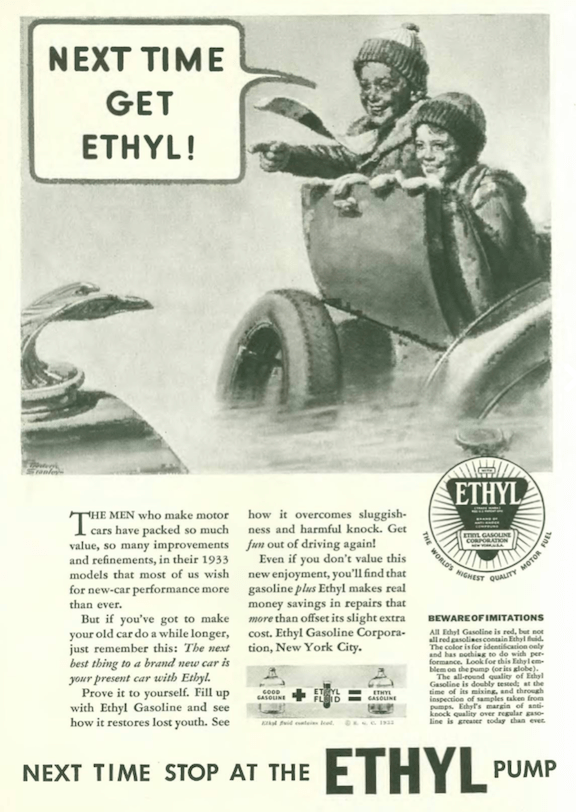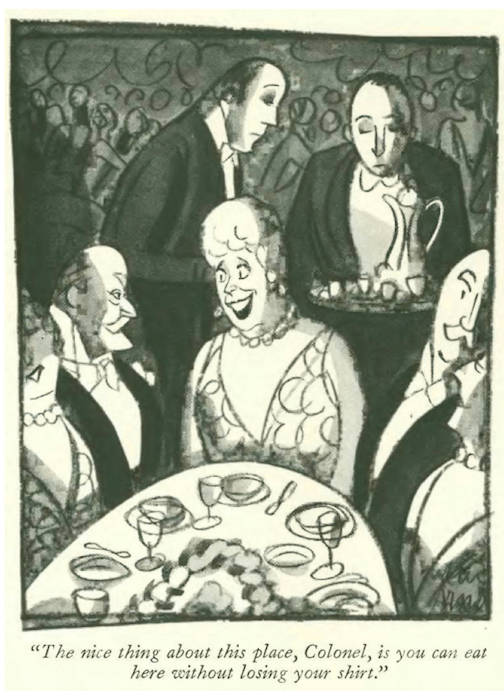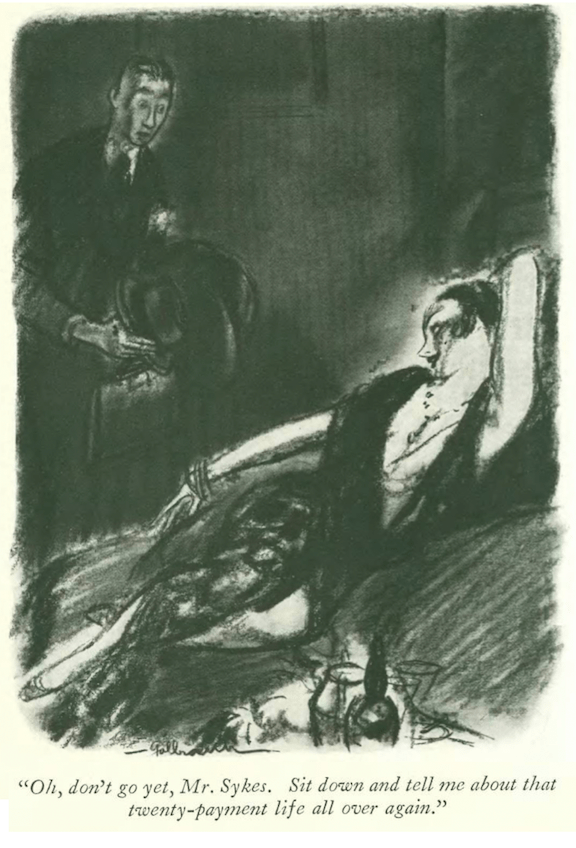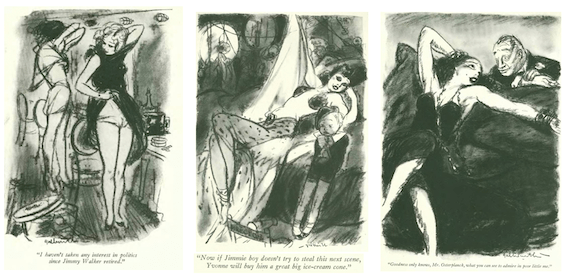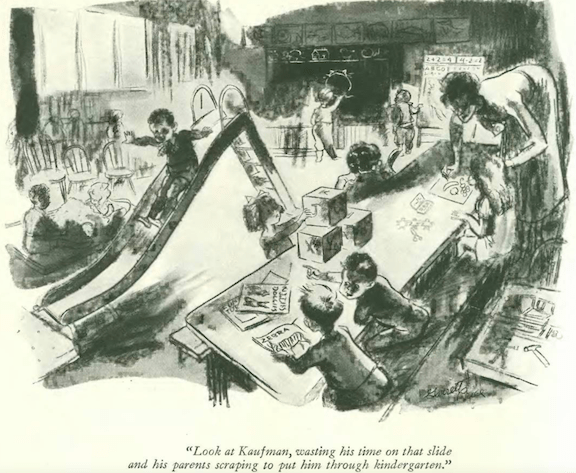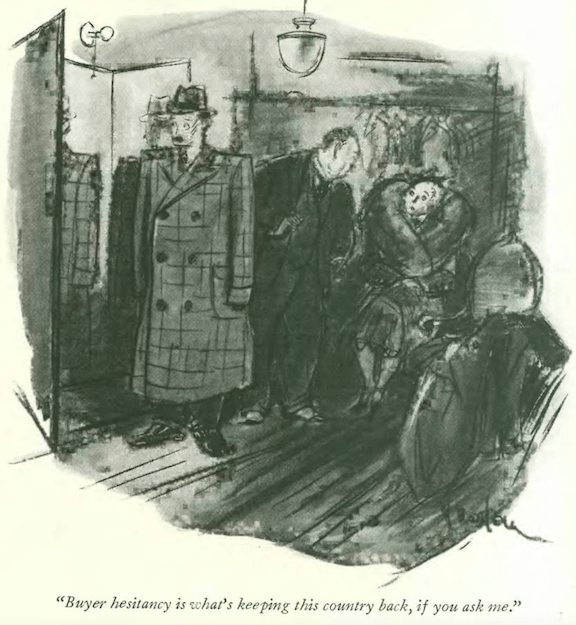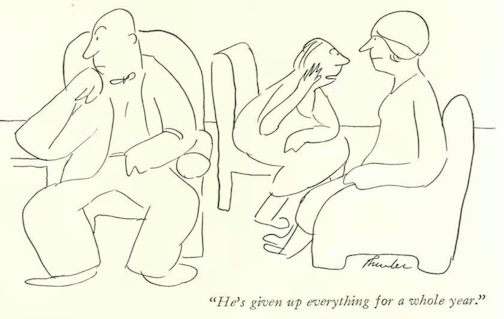Above: “The Fountain of Youth” mural by Ezra Winter in the Main Foyer of Radio City Music Hall. (Architectural Digest)
The opening of two new theaters at Rockefeller Center no doubt brightened a few souls at the start of 1933, but art and architecture critic Lewis Mumford wasn’t particularly dazzled by the “watered-down” modernism of the buildings’ much-ballyhooed decor.

Oddly, it was a philosophy professor from the University of Nebraska, Hartley Burr Alexander, who was tasked with creating an artistic vision for Rockefeller Center, developed along the theme of “Frontiers of Time.” According to Mumford, Alexander’s “classic-banal” vision, executed under the “virtuous glare” of theatrical impresario Samuel L. “Roxy” Rothafel, resulted in the first “large-scale vulgar tryout of modern art.” Excerpts from Mumford’s column:
Several aluminum sculptures in Radio City Music Hall no doubt pleased Mumford—Gwen Lux’s Eve sculpture, William Zorach’s Spirit of the Dance, and Robert Laurent’s Goose Girl. However, thanks to Roxy Rothafel’s “virtuous glare” and worries that the nudes might hurt ticket sales, all three sculptures were temporarily banned from RCMH.

Radio City Music Hall also featured an array of murals that should have brought some delight to Mumford…

* * *
Mea Cuppa
“The Talk of the Town” shared this account of fifteen Harvard freshman who dared to pay a call on the home of visiting poet T.S. Eliot…

* * *
Country Cousins
During his 1932 presidential campaign Franklin D. Roosevelt paid a Sept. 29 visit to the Waterloo, Nebraska farm of Gustav “Gus” and Mary (Kenneway) Sumnick. Mary served FDR a chicken dinner and pie before he addressed a crowd of 8,000 at a rally on the Sumnick farm. Gustav, a German immigrant, and Mary, a daughter of Irish immigrants, were successful farmers even during those tough years. The visit would turn the Sumnicks into national celebrities, and in later years FDR would return to visit the family and would also stay in touch by telephone. Howard Brubaker, in “Of All Things,” made this observation about the celebrated farm family:


* * *
The Gang’s All Here
Siblings Ethel, John and Lionel Barrymore of the famed Barrymore theatrical family appeared together in just one film—Rasputin and the Empress—and you would think that would have been enough to guarantee multiple awards along with box office gold. However, the film actually lost money, and on top of that attracted a lawsuit that further dipped into the pockets of MGM producer Irving Thalberg. Critic John Mosher was wowed by Ethel’s performance, but wasn’t exactly charmed by the overall production:

About that lawsuit: The film used the real-life Princess Irina Yusupov as a model for Princess Natasha, portrayed by English actress Diana Wynyard. The film implied that Rasputin raped Princess Natasha (that is, Irina), which wasn’t true, so she sued MGM and won $127,373 from an English court; MGM reportedly settled out of court in New York for the sum of $250,000 (roughly equivalent to nearly $5 million today). The ubiquitous “all persons fictitious” disclaimer that appears in TV and film credits is the result of that lawsuit.
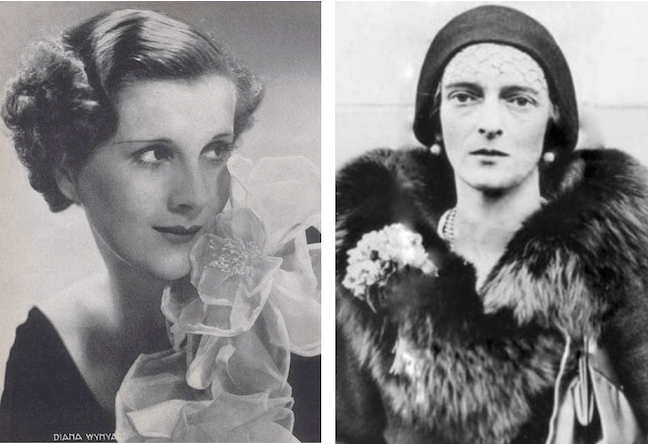
A much-less controversial film was the “glib” No Man of Her Own, a pre-Code romantic comedy-drama starring Clark Gable and Carole Lombard in their only film together:

* * *
Vroom-Vroom
The annual National Automobile Show opened at the Grand Central Palace and other locations in Midtown, promising an array of affordable models:


Auto Show visitors also got a glimpse of their streamlined future in the form of a 1933 Pierce-Arrow Silver Arrow…

* * *
From Our Advertisers
The New Yorker had unusually thin issues over the holidays, so the magazine’s bean-counters must have been thrilled by the dozens of ads that poured in ahead of the National Automobile Show. As usual Walter Chrysler took out several two-page ads to promote his Chryslers, Plymouths, Dodges and DeSotos…
…while GM one-upped Walter with its own series of two-page ads—in color—sprinkled throughout the magazine…everything from the affordable Oldsmobile…
…to the high-end Cadillac…
…General Motors also featured this Peter Arno-themed ad (Arno-inspired wood carvings featuring the sugar-daddy walrus) to promote its posh new venue at the Waldorf-Astoria…
…the folks at struggling Hupmobile tried to wow not with shiny cars but rather with the announcement of their…drum roll, please…annual report…
…companies that supported the auto industry also got in on the act, including the makers of leaded fuel…this image says a lot about the lack of safety concerns in the 1930s…
…John Hanrahan, who early on served as The New Yorker’s policy council and guided it through its lean first years, became the publisher of Stage magazine (formerly The Theatre Guild Magazine) in 1932. In 1933 Stage became part of the Ultra-Class Magazine Group’s line-up that included Arts & Decoration and The Sportsman. Stage published its last issue in 1939, and I don’t believe the other two survived the 1930s either…

…on to our cartoons, we join Peter Arno for some fine dining…
…based on the what we have seen lately from William Crawford Galbraith, he seems to be hung up on seductresses and showgirls…
…to my point, some of Galbraith’s recent entries…
…we move on to Richard Decker and a dangerous cold front…
…Garrett Price pondered the wisdom of children…
…Gluyas Williams was back with the latest industrial crisis…
…Perry Barlow found some ill-fitting words to go with an ill-fitting coat…
…and we close with James Thurber, and some very fitting words for those times, and ours…
Next Time: March of Time…


